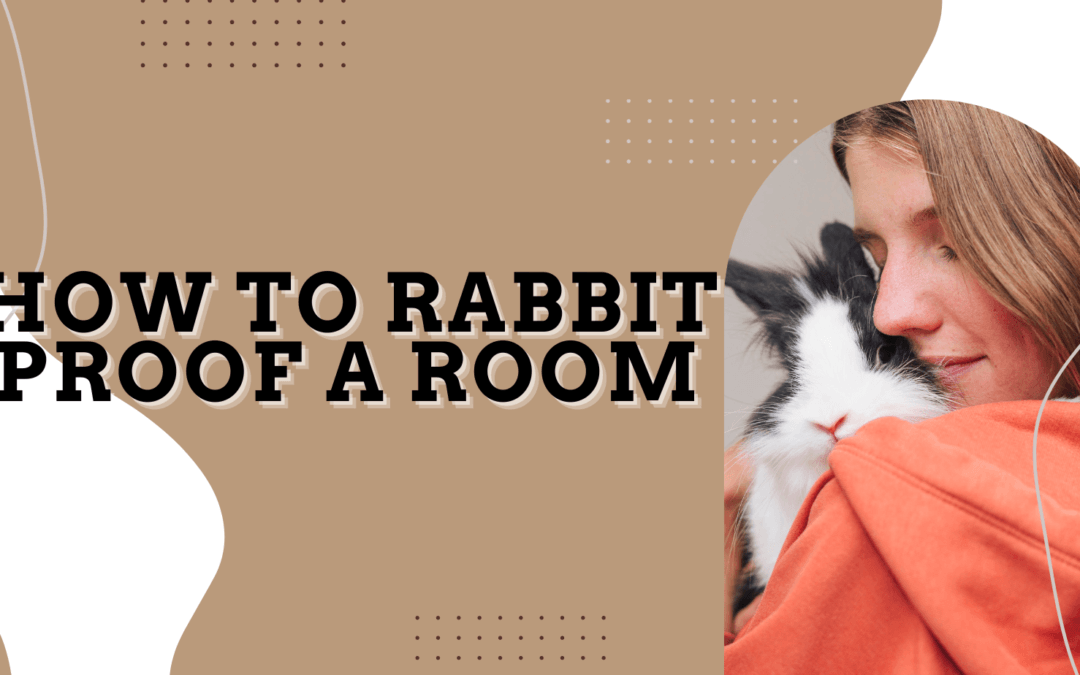Learning how to rabbit proof a room is essential if you plan to keep rabbits inside your home. Since they are playful and curious, they will chew and dig items that they find interesting. When it happens, you may spend money on repairs and renovation. But worse of all, your rabbits may die after ingesting harmful chemicals.
This post will help you know how to bunny proof a room. It will tackle how you can rabbit proof the wires, baseboards, and furniture inside your room. You will also know the hazards in your home that your bunny must avoid. Keep reading to learn more!

Rabbit-Proofing Wires and Cables
Wires and cables are prone to get chewed by your furry pets. Bunnies mistake these wires for roots, so instinctively, they bite them. Their sharp teeth can cut through the cables. Hence, they may ruin your appliances, or they may get electrocuted. Thus, you must know how to bunny proof a room.
You can hang the wires on the walls using hooks, making them inaccessible to your bunnies. Rearranging the furniture and blocking and covering the sockets is also helpful. However, ensure that the gaps are unavailable to your bunnies. It is also better to place the wires in one or two spots and then block them with furniture.
For reachable wires, you can cover them with plastic split loom tubings. It is also known as vacuum tubing, plumber’s tubing, and polygon tubing. You can buy this tubing in different sizes, thicknesses, and materials. Wireless channels, shower rod covers, and PVC pipes are offered by hardware stores.
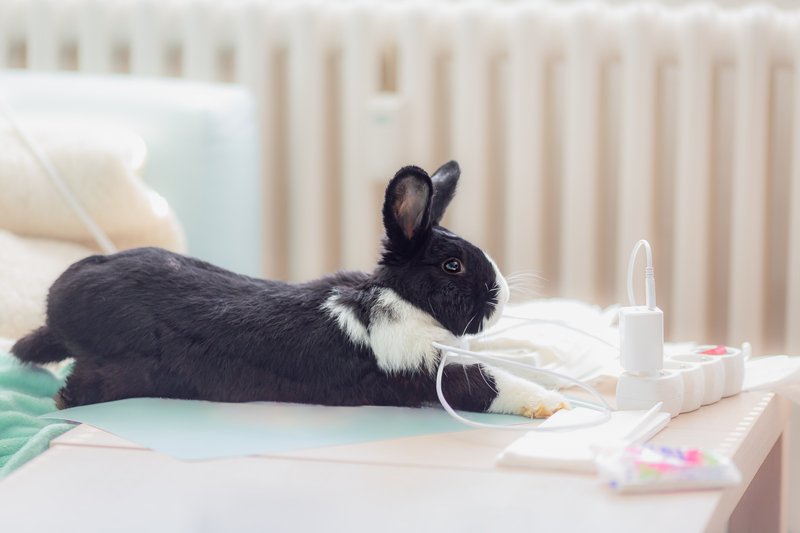
Rabbit-proofing Baseboards
Since bunnies love to chew wood to trim their teeth, they may damage the baseboards on your house. They are located on the lowest parts of the interior walls. Rearranging your furniture can block the access of the bunnies to the baseboards. Another option is placing ceramic tiles, willow bridges, or cardboard boxes. Make sure they are heavy enough, preventing your rabbit from moving them.
You can use install untreated wooden planks and attach them to your baseboards. However, this option may not be possible if you rent a house. Other choices are placing wood corner protectors and flexible cat scratchers. Putting a small fence is also a good idea, keeping your bunny away from the baseboards.
Bitter apple spray is also effective in preventing your bunny from chomping softwoods. Reapply them frequently to the spots that your rabbits love to chew. To save money, you can make a homemade bitter apple spray by mixing two cups of apple cider with one cup of vinegar. You can also use lemon juice as an alternative to vinegar.
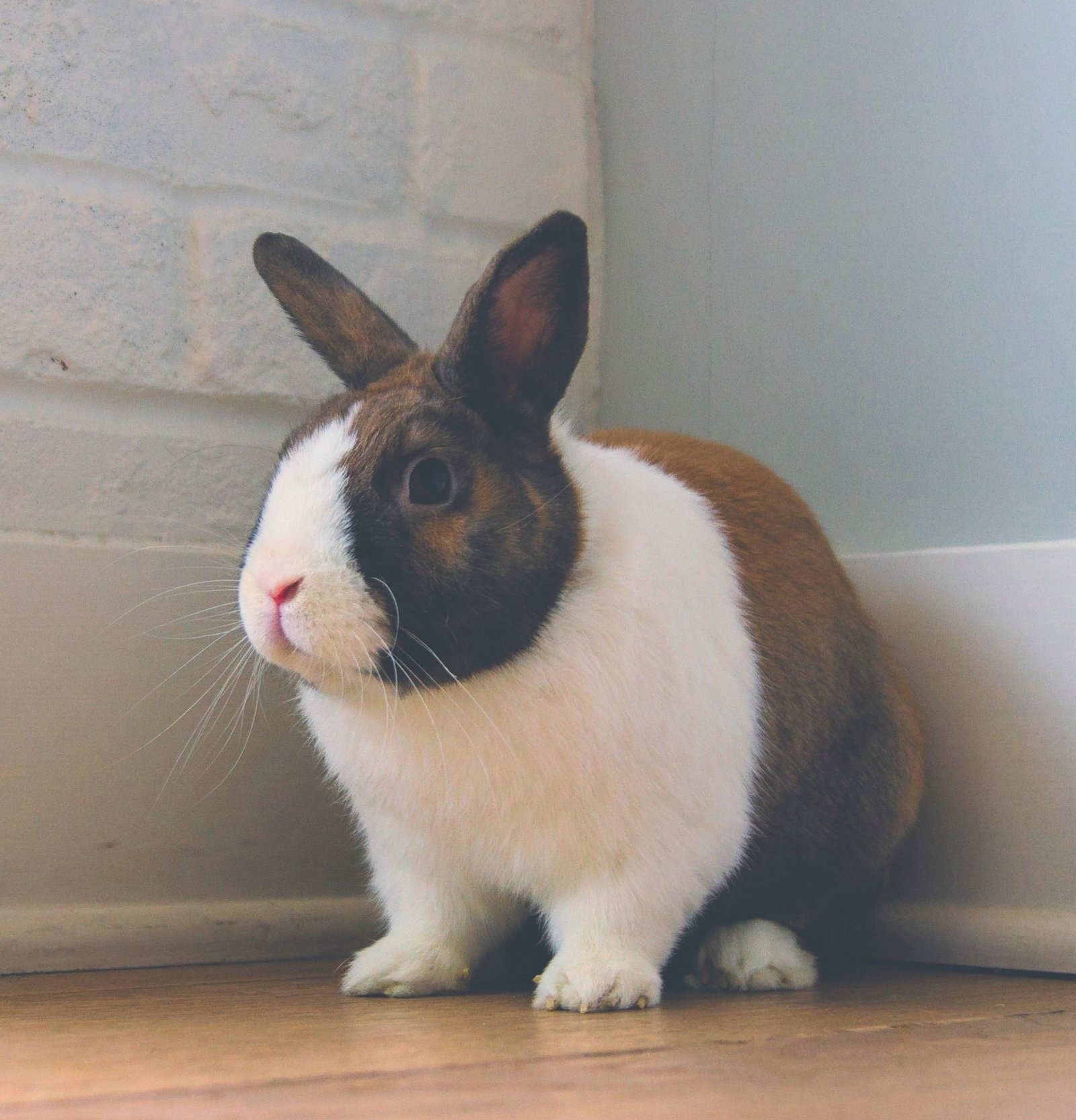
Rabbit-Proofing the Carpet
Digging and chewing are some habits you cannot stop rabbits from doing. Thus, it is not surprising to see damaged carpets inside the house. Luckily, there are things that you can do to rabbit-proof your carpet. The easiest way is to transfer your bunny to a room with hardwood and tiled flooring. If it is not possible, there are still other options.
You can lay down low-pile carpeting or rugs that you won’t mind being chewed by your pet. If you have no choice, you can cover a ceramic tile at the spot of the carpet that your bunny loves to chew. Covering the carpet with plastic mats and rugs can also help. However, ensure they are made of wool or cotton, so they’ll be safe for your pets.
Other kinds of mats that you can put on your carpet are children’s play mats, puzzle mats, horse mats, and outdoor rugs. Giving chew toys to your rabbits will keep them distracted. Thus, they won’t focus on digging and chewing your carpet.

Rabbit-Proofing Furniture
Bunnies love to make their nests under the furniture. But you shouldn’t let them since they may get squeezed inside. Prevent them from going under the furniture by using storage cube fencing. You can install it by using zip ties to connect the panels. Also, hooks can help attach the fence to the furniture.
As an alternative, you can use plastic desk mats under the furniture. To save money, you can also use flattened cardboard boxes. However, you should check and replace them now and then since rabbits can chew and dig into them quickly. Giving natural toys will prevent your bunnies from chewing a lot of stuff.
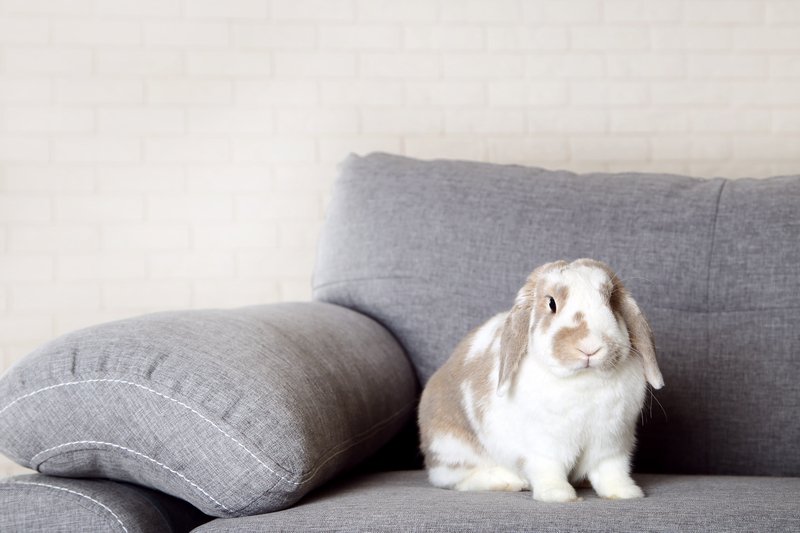
Furniture Legs
Furniture legs are also subject to the rabbits’ nibbling and chewing since they are made of wood. You can use a toilet or kitchen roll tubes to protect the furniture legs. Cut them along the length and then slip them over the legs. Install plastic corner guards or cover them with PVC pipe for permanent solutions.

Furniture Upholstery
Considering that rabbits are natural burrowers, they may ruin your furniture upholstery. To prevent this, you must protect the underside by putting a barrier. Some of the things that can cover the bottom are plywood, hardware cloth, or wooden frames. Spraying citrus oil outside the upholstery will prevent the bunnies from chewing. As much as possible, do not place anything on the top of the furniture since it may accidentally fall on your bunny.

Rabbit-Proofing your Valuable Items
Once you have decided to let your rabbit live with you inside your home, you must know how to rabbit proof a room. It will keep your valuables safe. Bunnies will always find something they can chew, and they don’t mind if they are valuable to you. Here are some of the ways how to bunny proof a room and keep your items safe:

Books
Unfortunately, books are included in the chewing list of bunnies. Because of the texture of papers, rabbits find it amusing to bite and tear them up. You can use bookshelves that have glass fronts or doors. If you don’t own these bookshelves, you must put the most important documents on the top shelves. In keeping your other books, you can place them inside plastic, copper, or brass bins to keep them safe.
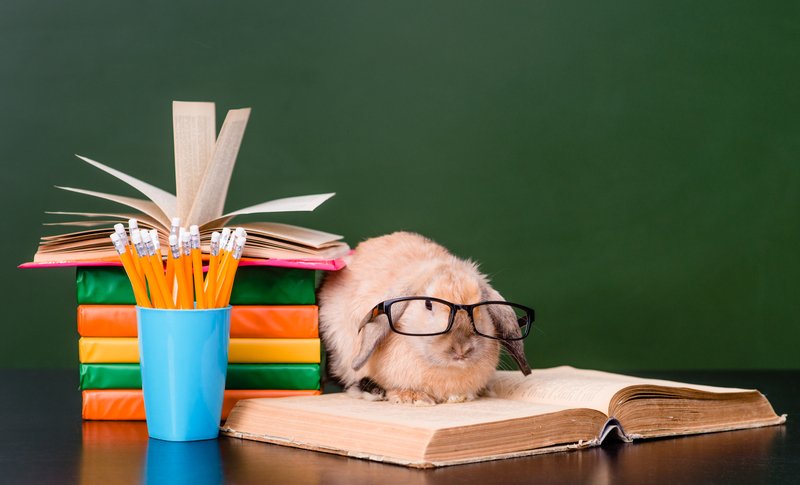
Appliances
Appliances have plenty of wires, so your bunnies love to spend time behind them to chew the cables. Wires are hazardous once bitten by these furry pets since they may get electrocuted. When setting up your TV or freezer, ensure that their wires are inaccessible to your bunny.
By arranging the appliances, you can cover the sockets and hang the cables on the walls. If you cannot hang them on the walls, wrap the sides and bottom of the appliances with ornaments. Small fences can also prevent the bunnies from reaching the cables.

Electronics
If you are charging your phone or laptop, ensure that your bunny cannot reach the charger. Also, don’t put your electronics on the couch since your bunnies may jump and damage them. You can place them in high places where your bunnies cannot reach them.

Rabbit-Proofing Wall Areas
Walls and wallpapers
The walls and wallpapers inside your home are susceptible to rabbits’ sharp teeth. Suppose you want to keep the aesthetics of your home; learning how to rabbit proof a room is essential. You don’t have to remove all the wallpapers and decorations. Below are some of the techniques to rabbit proof walls and wallpapers.
Protect the walls and wallpapers by covering them with clear plastic panels. Since they are sturdy enough, your bunnies cannot easily rip them off. These plastic panels are available in hardware and plastic stores. If the wallpapers have been damaged, you can place furniture in front of them to conceal the bitten part.
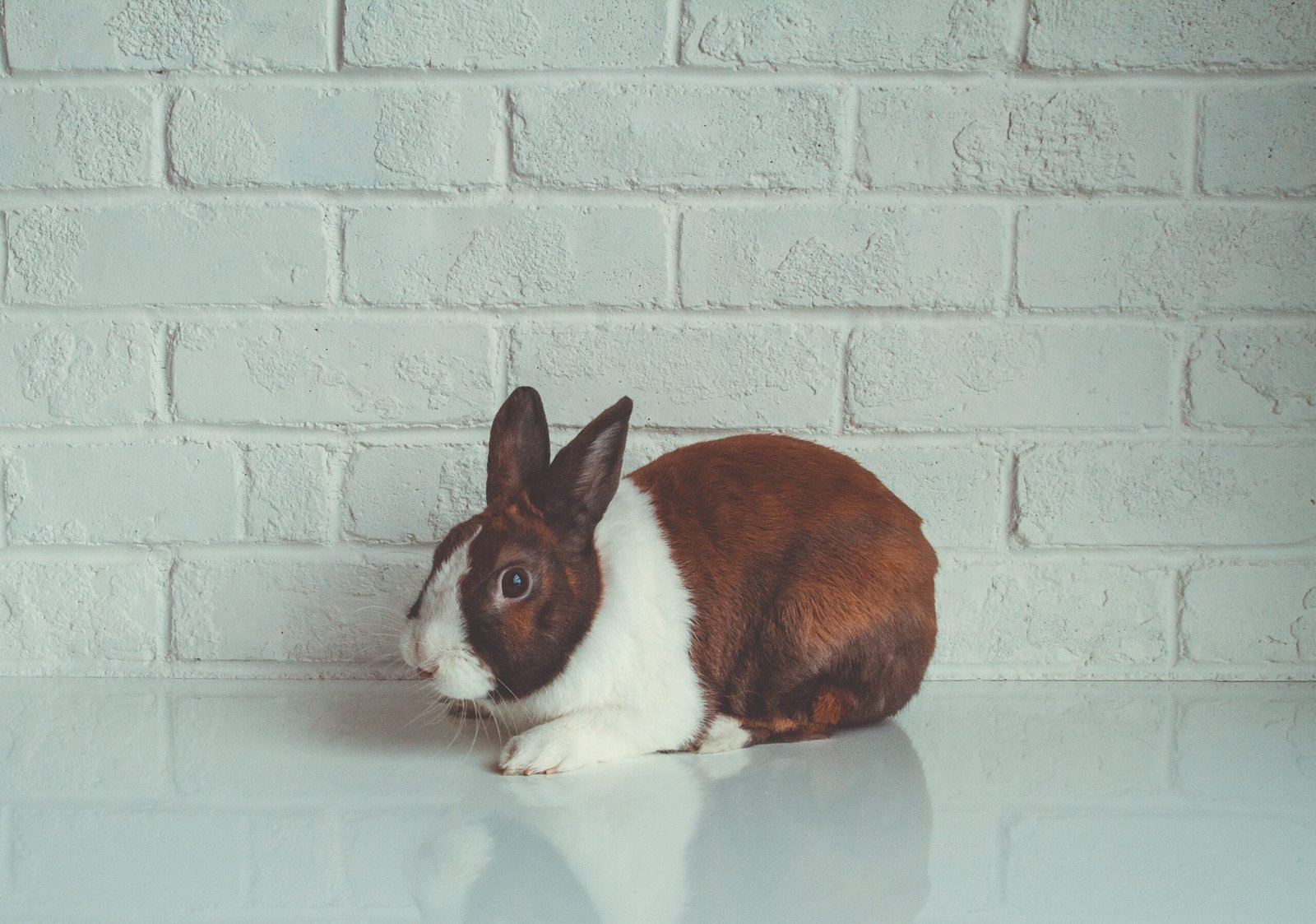
Curtains
Most rabbits are playful, and they can mess up with your curtains. Besides damaging your new-bought curtains, the strings also harm their digestive systems. Once they ingest them, they may suffer from severe health issues like GI stasis. To prevent your bunnies from chewing your curtains, you must install a hook to tie the curtains.

Keeping Away Hazards from Bunnies
Learning how to bunny proof a room can protect your bunnies from hazardous materials. Harmful chemicals inside our home are toxic and fatal to bunnies. Consuming small amounts of prohibited food may cause an imbalance in their stomachs.

Houseplants
The majority of houseplants are toxic to bunnies. If you cannot remove your plants inside your home, you can place them where rabbits cannot reach them. One of these is the shelves. They are high enough, so they are inaccessible to your bunnies. You can also hang plants on the racks, creating a tropical vibe in your home.
Aside from shelves, plant stands are also helpful. However, ensure that they are stable enough since bunnies have the strength to drop them. Another technique is trimming your plants regularly. Also, never place your ornamental plants on platforms accessible to your furry pets. Here are some houseplants toxic to bunnies:
- Monstera deliciosa
- Aloe vera
- Golden pothos
- Asparagus fern
- Daffodils
- Hydrangea
- English ivy
- Ribbon plant
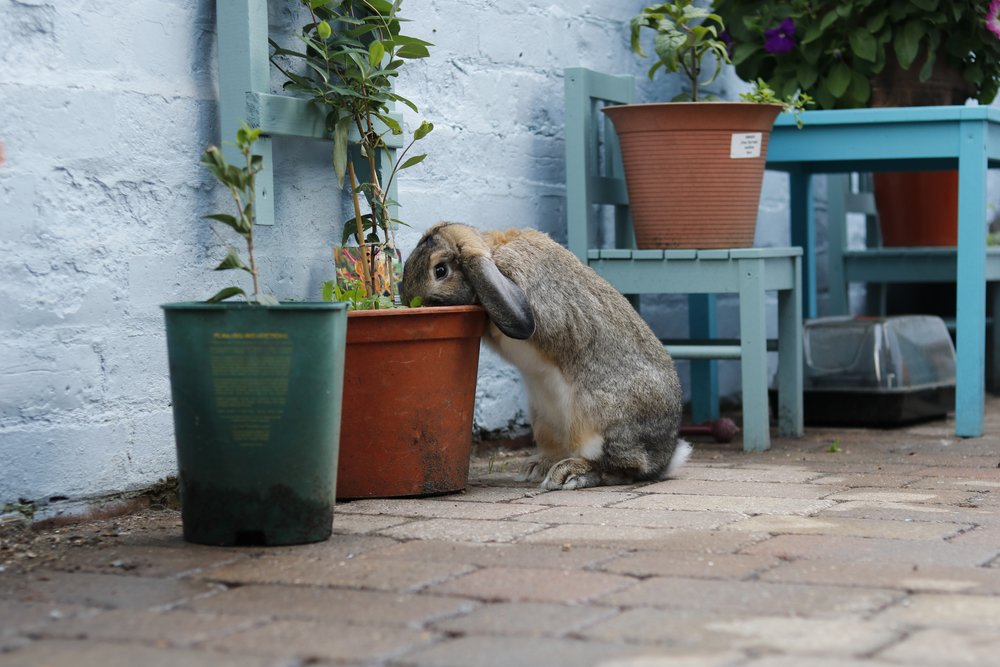
Insecticides and Cleaning Materials
Failing to know how to rabbit proof a room may lead to the death of your bunnies. Insecticides and cleaning materials are made of strong chemicals that can kill pets. Therefore, you should keep them in proper places inaccessible to your rabbits. These harmful chemicals must be put or locked on drawers. If you don’t have drawers, you can place them at the top of high shelves.
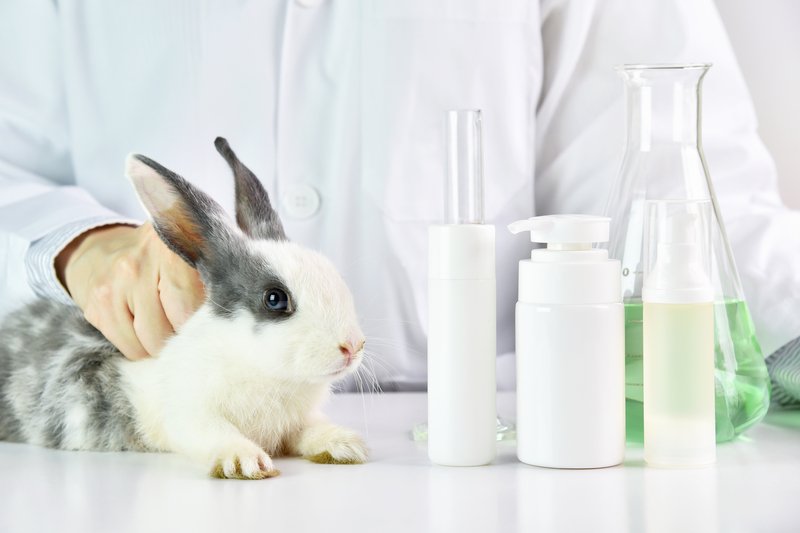
Conclusion
Knowing how to rabbit proof a room will protect your home and prolong the lives of your bunnies. You can enjoy living with your furry pets as long as they are safe. Giving them enough attention will also help them avoid damaging your home. As you apply your learnings on how to bunny proof a room, expect your bunnies to enjoy playing inside your house. Besides, you will also have peace of mind even though you let them hop around unsupervised.
Read More


